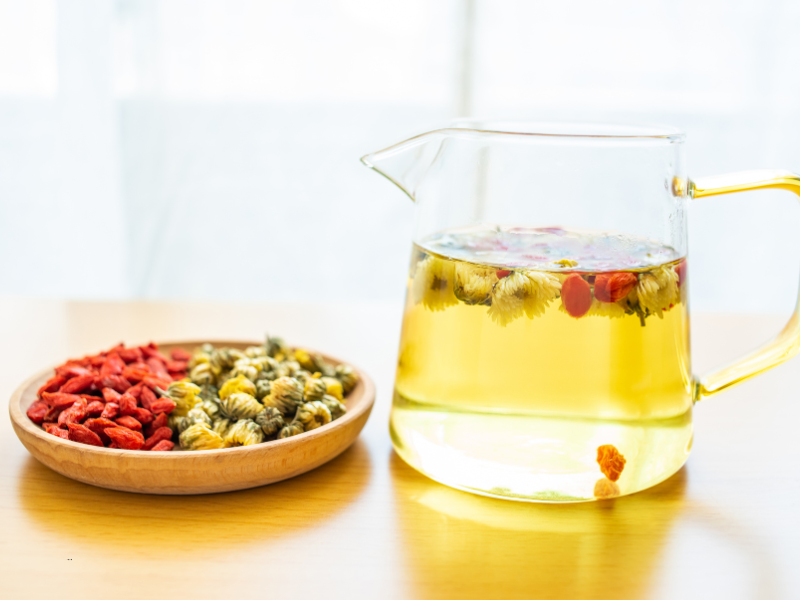Have you ever sipped a cup of tea so fragrant it transported you to a blooming garden? That’s the magic of Jasmine tea—a floral delight with roots in ancient traditions, now enchanting tea lovers across the globe. If you’re curious about how this exquisite beverage is described, prepared, and appreciated in English, you’re in for a treat. Jasmine tea, often called “scented tea,” seamlessly blends Chinese heritage with global charm, making it a staple in modern tea culture. As we explore its essence in English terms, we’ll uncover why this aromatic brew isn’t just tea; it’s an experience that transcends language barriers.
To start, Jasmine tea is primarily known as Jasmine tea in English, but its name captures only a fraction of its story. Originating in China’s Fujian province centuries ago, it involves infusing green tea leaves with fresh jasmine blossoms, resulting in a delicate, floral flavor profile. The term “scented tea” broadly refers to teas enhanced with flowers or herbs, and Jasmine varieties like Jasmine Pearl or Jasmine Silver Needle have become iconic names in Western markets. Historically, this tea gained popularity during the Song Dynasty and later spread to Europe via trade routes, where its English identity evolved. For instance, early British tea enthusiasts documented it as a “perfumed infusion,” helping it gain a foothold in English-speaking cultures. Today, ordering a cup in London or New York often involves simple phrases like “I’ll have a Jasmine green tea,” highlighting its seamless integration into daily vernacular. This linguistic ease reflects how the essence of Jasmine tea has been distilled into accessible English, making it a beloved choice for those seeking natural wellness and refined tastes.

Beyond its name, the preparation of Jasmine tea in English contexts emphasizes simplicity and tradition, with key steps easily described for home brewing. Typically, you’ll need high-quality loose-leaf Jasmine tea to achieve the best flavor. Start by heating water to around 80°C (176°F)—avoid boiling to preserve the delicate aroma. Add one teaspoon per cup and steep for 2-3 minutes; over-steeping can turn it bitter. In English, this process is often summed up as “infusing with patience,” as the floral notes develop gradually. You can enhance it with a splash of honey or enjoy it plain, embodying the phrase “less is more.” Health-wise, Jasmine tea is celebrated for its antioxidant properties, like boosting immunity and reducing stress. Studies, such as those cited in wellness journals, link it to benefits like improved digestion—all discussed straightforwardly using terms like “herbal infusion” or “detox tea” in English resources. For instance, many health blogs emphasize that “Jasmine tea may aid relaxation,” making it a popular choice in fast-paced societies. This practical approach not only demystifies the tea but also elevates it as a daily ritual, where English words guide you from pantry to palate effortlessly.
Culturally, Jasmine tea has woven itself into English-speaking societies through food pairings, literature, and social rituals. In the UK, it’s a common feature in afternoon tea services, complementing scones and sandwiches with its light, refreshing notes. Across the pond in the US, cafes often market it as a sophisticated alternative to coffee, using catchphrases like “floral escape in a cup.” The tea’s global appeal is evident in how English-language media portrays it; for example, novels and films reference it as a symbol of elegance, such as in memoirs of expatriates who discover it abroad. Moreover, sustainability movements highlight Jasmine tea as an eco-friendly option, with brands using terms like “ethically sourced” to appeal to conscious consumers. Anecdotally, sharing a pot of Jasmine tea can foster conversation, echoing the English idiom “breaking bread.” This cultural resonance ensures the tea remains relevant, not just as a drink but as a connector in multicultural settings—where the phrase “Let’s have some Jasmine tea” bridges gaps effortlessly.
In essence, exploring Jasmine tea in English reveals a world where language enhances appreciation without overshadowing tradition. Its journey from ancient Chinese fields to your teacup is a testament to timeless allure. So next time you crave a moment of calm, brew a cup and savor the harmony of flavors—it’s an English invitation to slow down and inhale serenity.